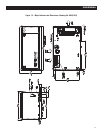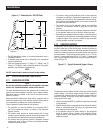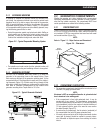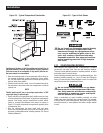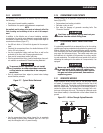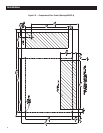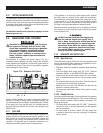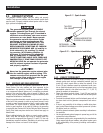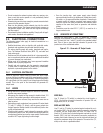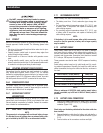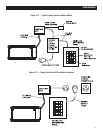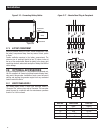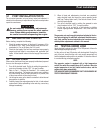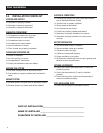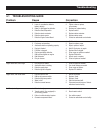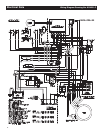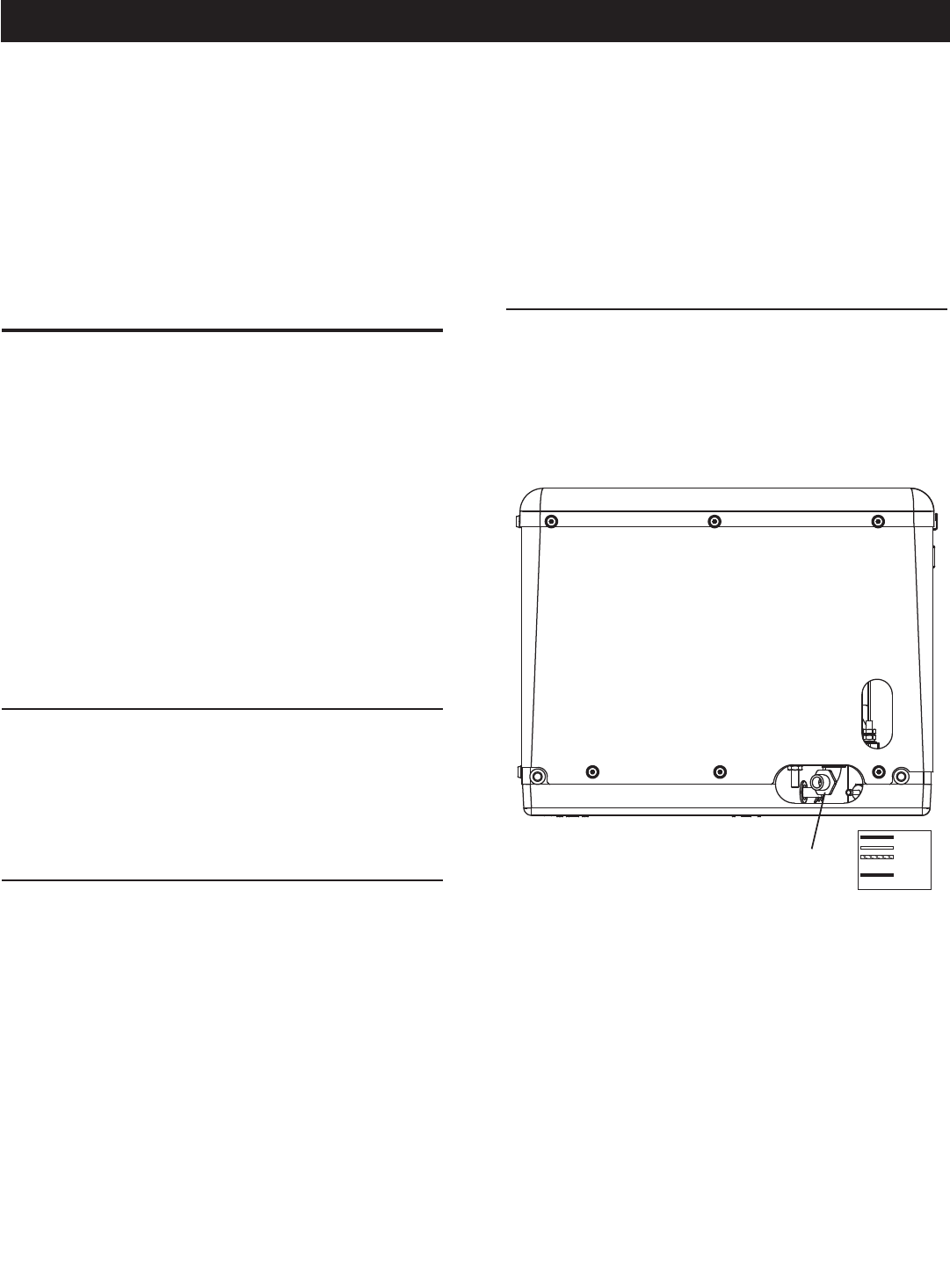
29
Do not terminate the exhaust system under any opening, win-•
dow or vent that can be opened or is not permanently sealed
from the vehicle interior.
Exhaust piping must be large enough to prevent excessive back •
pressure on the generator engine.
Never tee the generator engine exhaust pipe into the vehicle •
engine exhaust piping. This causes excessive back pressure on
the generator engine. Also, water from one engine can damage
the other engine.
Plan exhaust system installation carefully. Comply with all appli-•
cable codes, standards and regulations.
2.6 ELECTRICAL CONNECTIONS
The following general rules apply to electrical connections in a
recreational vehicle:
Qualified electricians who are familiar with applicable codes, •
standards and regulations should install electrical wiring.
The wiring should comply with codes, standards and regula-•
tions. The National Electrical Code (NFPA 70), and state and
local codes apply.
Switches and circuit breakers should be of a type approved for •
use in recreational vehicles and must be mounted and installed
to prevent damage from road shock.
Wiring must be of adequate size, have approved insulative •
qualities and be properly supported.
Conduit and wire openings into the generator compartment •
(if used) must be vapor-sealed to prevent entry of flammable,
explosive or poisonous gases into the vehicle.
2.6.1 ELECTRICAL JUNCTION BOX
Install an approved, square electrical junction box with a blank
cover on the interior or exterior wall of the area planned for installa-
tion of the generator (NOT on the generator). Route the generator's
AC output leads into this junction box through approved flexible
conduit. This is the point of first termination for generator AC
output leads.
2.6.2 WIRING
Wiring should be of stranded copper to reduce the chance that •
vibration may cause breakage.
Wire gauge size should be large enough to handle at least 115 •
percent of the installed generator's rated maximum current.
If neutral conductors are used, they must be the same size as •
other leg wires.
Route power supply conductors from generator AC output leads •
T1 (red), T2 (white), T3 (black) and the green ground wire
through approved flexible conduit to the electrical junction box
on the compartment wall.
If flexible metal conduit is used between the generator and the •
compartment junction box, the conduit end that terminates the
compartment junction box must be vapor-sealed. Flexible metal
conduit is NOT vapor tight along its entire length.
From the junction box, route power supply wires through •
approved conduit to either (a) double-pole, double-throw trans-
fer switch, or (b) approved isolation receptacle. Connecting to
a transfer switch or isolation receptacle must prevent vehicle
electrical circuits from being connected to two different power
supplies at the same time (such as generator and dockside
power).
Conductors must be rated 221° F (105° C) or must be of a •
larger conductor size.
2.6.3 GENERATOR AC CONNECTIONS
Generator AC output leads T1 (red), T2 (white) and T3 (black)
come out of the generator as shown in Figure 2.13. Leads T1 (red)
and T3 (black) are “hot,” while T2 (white) is the grounded neutral
lead. There is also a green lead that connects to ground in the
junction box of the recreational vehicle.
Figure 2.13 – Generator AC Output Leads
AC Output Leads
T3
T2
T1
Green
(Ground)
4500 Watts
Line T1 (black) to T2 (white) is protected by circuit breaker a
(CB1). Use this line to neutral connection to operate 120 volt,
single-phase, 60 Hz, AC loads.
5500 and 6500 Watts
Line T1 (red) to T2 (white) is protected against overload by a cir-
cuit breaker (CB1). Use this line-to-neutral connection separately
to operate 120-volt, single-phase, 60 Hertz, AC loads. Line T3
(black) to T2 (white) also is protected against overload by a circuit
breaker (CB2). Use this line-to-neutral connection separately to
operate similar loads. However, be sure the total unit load does not
exceed the maximum rating of the generator. The neutral line (T2,
white) on all units is a grounded neutral.
Installation



